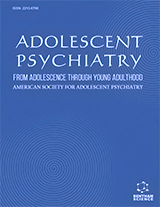Abstract
Introduction: Trauma Systems Therapy (TST) intervention arose out of the recognition that the patient population we served, many of whom were suffering from the aftermath of traumatic stress, were not improving from the traditional approaches we were using.
Method: This article summarizes the experience of developing an approach to assessment and treatment called trauma systems therapy (TST), that my colleagues and I have been evaluating and developing over the past 10 years.
Results: TST is classified by the National Child Traumatic Stress Network an effective and promising intervention .This work resulted in the writing of the book, Collaborative treatment of traumatized children and teens: The trauma systems therapy approach (Saxe, Ellis, & Kaplow 2006), which is the manual for TST. This book gives details about how and why we developed trauma systems therapy, and is the guide for assessment, treatment and systems implementation using this model.
Conclusions: TST makes sense in light of what we know about the neurobiological underpinnings of traumatic stress disorders as well as our understanding of difficulty with emotional regulation. TST is both an effective clinical model for treatment of traumatized children and adolescents, and also an organizational model for the integration of services among agencies that provide treatment to these children.
Keywords: Traumatic stress, treatment, children and adolescents, Trauma Systems Therapy, psychiatric services
Adolescent Psychiatry
Title:Treating Traumatic Stress in Children and Adolescents
Volume: 2 Issue: 4
Author(s): Glenn Saxe and Adam Brown
Affiliation:
Keywords: Traumatic stress, treatment, children and adolescents, Trauma Systems Therapy, psychiatric services
Abstract: Introduction: Trauma Systems Therapy (TST) intervention arose out of the recognition that the patient population we served, many of whom were suffering from the aftermath of traumatic stress, were not improving from the traditional approaches we were using.
Method: This article summarizes the experience of developing an approach to assessment and treatment called trauma systems therapy (TST), that my colleagues and I have been evaluating and developing over the past 10 years.
Results: TST is classified by the National Child Traumatic Stress Network an effective and promising intervention .This work resulted in the writing of the book, Collaborative treatment of traumatized children and teens: The trauma systems therapy approach (Saxe, Ellis, & Kaplow 2006), which is the manual for TST. This book gives details about how and why we developed trauma systems therapy, and is the guide for assessment, treatment and systems implementation using this model.
Conclusions: TST makes sense in light of what we know about the neurobiological underpinnings of traumatic stress disorders as well as our understanding of difficulty with emotional regulation. TST is both an effective clinical model for treatment of traumatized children and adolescents, and also an organizational model for the integration of services among agencies that provide treatment to these children.
Export Options
About this article
Cite this article as:
Saxe Glenn and Brown Adam, Treating Traumatic Stress in Children and Adolescents, Adolescent Psychiatry 2012; 2 (4) . https://dx.doi.org/10.2174/2210676611202040313
| DOI https://dx.doi.org/10.2174/2210676611202040313 |
Print ISSN 2210-6766 |
| Publisher Name Bentham Science Publisher |
Online ISSN 2210-6774 |
 26
26
- Author Guidelines
- Bentham Author Support Services (BASS)
- Graphical Abstracts
- Fabricating and Stating False Information
- Research Misconduct
- Post Publication Discussions and Corrections
- Publishing Ethics and Rectitude
- Increase Visibility of Your Article
- Archiving Policies
- Peer Review Workflow
- Order Your Article Before Print
- Promote Your Article
- Manuscript Transfer Facility
- Editorial Policies
- Allegations from Whistleblowers
- Announcements
Related Articles
-
Synthesis and Biological Activity of Novel N-glucosides Containing Substituted Piperazine Moiety
Letters in Drug Design & Discovery Basic Symptoms and the Prediction of First-Episode Psychosis
Current Pharmaceutical Design MicroRNA: Biogenesis, Function and Role in Cancer
Current Genomics Impact of Antiretroviral Therapy on the Relapse of Cryptococcosis and Survival of HIV-Infected Patients with Cryptococcal Infection
Current HIV Research Meet Our Editorial Board Member
Current Medical Imaging Autoantibody-Induced Formation of Immune Complexes in Normal Human Serum
Current Pharmaceutical Design QSAR Studies for the Pharmacological Inhibition of Glycogen Synthase Kinase-3
Medicinal Chemistry Thoughts of Death, Depression and Guilt in a Healthcare Worker Who Infected Her Husband with SARS-CoV-2: A Case Report
CNS & Neurological Disorders - Drug Targets Patent Selections
Current Biomarkers (Discontinued) Peptides and their Metal Complexes in Neurodegenerative Diseases: from Structural Studies to Nanomedicine Prospects
Current Medicinal Chemistry History and Therapeutic Use of MAO-A Inhibitors: A Historical Perspective of MAO-A Inhibitors As Antidepressant Drug
Current Topics in Medicinal Chemistry Recent Applications of Doebner, Doebner-von Miller and Knoevenagel-Doebner Reactions in Organic Syntheses
Current Organic Synthesis Molecular Genetics of Early- and Late-Onset Alzheimer’s Disease
Current Gene Therapy Current Concepts in the Management of Diabetic Polyneuropathy
Current Diabetes Reviews Functional Connectivity in Elderly Controls and AD Patients Using Resting State fMRI: A Pilot Study
Current Alzheimer Research Minocycline Mediated Mitochondrial Cytoprotection: Premises for Therapy of Cerebrovascular and Neurodegenerative Diseases
Current Drug Targets BACE1 Structure and Function in Health and Alzheimers Disease
Current Alzheimer Research Recent Progress in Chemosensors Using Aldehyde-bearing Fluorophores for the Detection of Specific Analytes and their Bioimaging
Current Medicinal Chemistry Gene Therapy, A Novel Therapeutic Tool for Neurological Disorders: Current Progress, Challenges and Future Prospective
Current Gene Therapy Preliminary Pharmacological Screening of Some Thiosemicarbazide, s-triazole, and Thiadiazole Derivatives
CNS & Neurological Disorders - Drug Targets


























